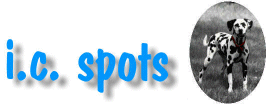 |
The Transceiver is the heart of the system. It receives signals from
the remote controls, palm pads, motion sensors, or computer interface and sends the signal
into the house wiring for transmission to the device being controlled. The transceiver is
set to a "house code" of "a" through "p" and a "unit
number" of 1 or 9. A lamp can be plugged in a receptacle located in the bottom
of the unit, although it is only an on/off control and can not be dimmed. A single
transceiver can control up to 15 other devices set to the same "house code". For
more than 16 devices a second transceiver is necessary that is set to a different house
code. Remote controllers are set to control a specific house code.
Top of Page
|
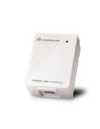 |
The Computer Interface is actually a small memory storage device that
connects to your computer serial port. It has an internal clock that is synchronized with
your computer and receives commands programmed through a user friendly program run on your
computer. After uploading information to the interface, the interface can be disconnected
from the computer or the computer can be turned off. The commands and macros are executed
into the house wiring at preset times or by remote control. You can turn on the
lights before you get up in the morning or when you come home at night, run pumps, fans or
anything else you'd like to run on an automated basis including lights coming on at a
preset brightness level.
Top of Page
|
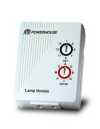 |
The Lamp Module is one of the most basic devises. It can run a
resistive load (i.e.: an incandescent light bulb) of up to 300 watts. The top black dial
is set to a unit number and the lower red dial is set to a house code. You can run as many
devices as you'd like controlled concurrently by setting them to the same house and device
codes. Any lamp plugged in can be dimmed with the remotes.
Top of Page
|
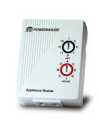 |
The Appliance Module looks the same as the lamp module but instead of
using electronic switching it uses a small relay so that it can control inductive loads
such as motors and fluorescent lighting. It can not be dimmed.
Top of Page
|
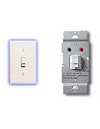 |
The Light Switch replaces any current light switch in your house. The
little red and black dials set the house and unit codes. The switch is a push button that
can be operated at the switch or through the remotes, motion sensors or commands stored in
the computer interface. Units are available to use in three-way switch applications. The
switch is rated at 500 watts incandescent.
Top of Page
|
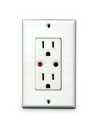 |
This Duplex Outlet takes the place of a regular outlet. The top
outlet is X-10 controlled rated at 15 amps resistive load. The bottom outlet is a
regular uncontrolled outlet.
Top of Page
|
| 
|
The Universal Learning Remote makes you feel like you have remote
control of the universe! It can control 9 different types of devices. In our house the TV,
satellite dish, cable, Sony digital pre-amp, CD player, VCR and all the lights are
controlled from one unit. . . well, actually we have five remotes spread out around the
house. Pressing the X-10 button and then pressing the "power" button turns on
all of the lights on the same house code. Pressing X-10 and then pressing the
"mute" button turns all lights on the same house code off. That's really handy
when it's time to go to bed and you don't want to walk around making sure all the lights
are off inside and out. Pressing the X-10 button and then a number such as "7"
lets you dim number 7 by using the volume buttons. The remote sends out radio signals for
X-10 control and infrared for line of sight devices.
Top of Page
|
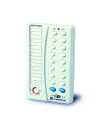 |
The Palm Pad lets you control any X-10 device. It has up and down
buttons which are used in conjunction with a particular number to allow dimming. We glued
a magnetic business card that someone gave us to the back and stuck it to the
refrigerator. It's used all the time. Any key on any controller can be programmed to
execute a "macro". A macro is a sequence of commands to one or more different
devices.
Top of Page
|
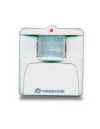 |
The Motion Sensor works by sensing body heat. It sends a radio signal
to the transceiver to turn on a particular unit number. After a preprogrammed amount of
time it sends an off signal. More motion resets the timer to start the off countdown
again. We use this in a couple of rooms where the light switches are hard to get at and in
some closets so the light comes on when the doors are opened.
Top of Page
|
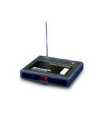 |
The Relay helps extend the range of the radio signals from one end of
the house to the other. It "catches" the signals from the controllers and then
resends the signals to the transceiver..
Top of Page
|
